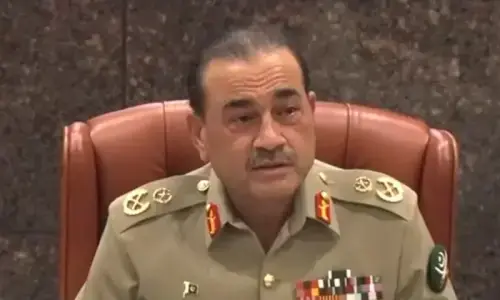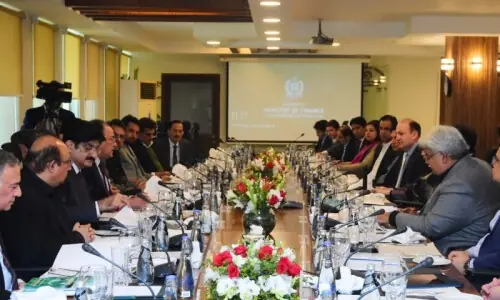THE closure of land route at two points along Line of Control in Kashmir on Srinagar-Muzaffarabad and Rawalakot-Poonch sectors a day after the ministerial meeting in Delhi last week is a rude reminder of an inescapable reality, the complex dynamics of trade and the power of vested interest on either side not comfortable with the idea.
Sartaj Aziz, the adviser to the PM on foreign affairs, downplayed the incident talking to Dawn.
“We are handling it,” he said, terming the tit-for-tat developments on this count based on a localised affair with marginal, if at all any, bearing on the momentum built by the government for improving trade ties with India.
Prime Minister Nawaz Sharif’s government moved at remarkable speed over the past few weeks to shed the impression in corporate circles of the government dragging feet on the subject that trade and industry perceive to be of great value for their business future.
The business community in Pakistan has outgrown of the fear of competition from Indian industry. It now perceives India as a cheaper supply source of intermediate goods/raw material and an attractive ready market next door.
In December the government announced it would de-link the issue of trade relations with India from the progress on the composite dialogue.
To surmount impediments for free flow of two-way merchandise across border both sides agreed to resume talks on commercial issues.
After lapse of one and a quarter years, the commerce secretaries met early this month. Within a week Commerce Minister Khurram Dastagir landed in Delhi to meet Anand Sharma, his counterpart in India, on the margins of Fifth Saarc Business Leaders Conclave.
They did not just trade ideas but also struck a deal to expand the facility of movement of merchandise through border crossings round the clock. Currently, it is restricted to ten hours a day.
They also approved a liberalised visa policy for businessmen and pledged to facilitate the third round of Joint Business Forum to be held in Pakistan next month beside several other trade promotion events.
Trade experts value the distance covered on the path of trade normalisation by the Sharif government but foresee many twists and turns ahead unlike optimists hoping for a linear trajectory.
“Since I got involved in Pakistan-India trade talks in 1996 it has happened every single time. The elements that are against warming up of ties with India successfully subverted many initiatives.
However, this time round I see greater willingness in the government and lesser resistance from business lobbies that have been opposed to the idea in the past,” an international trade expert who was associated with past governments told Dawn.
It is a fact that the complex dynamics of closer economic ties between India and Pakistan limits the scope of a quantum leap in trade between South Asian neighbours in immediate future despite the thrust in the right direction.
Talking and clever wordings of joint declarations can not achieve what more equitable real terms of trade and efforts to create an even playing field to agriculture and industry could.
It will certainly help if India takes a lead, sets aside displays of its superior economic diplomacy skills at the dialogue table and takes tangible steps to narrow the gap between perception and reality.
In theory, India has liberalised its trade regime for Pakistan as it granted Pakistan ‘most-favoured nation status’ in 1996, about a decade before signing of South Asian Free Trade Agreement (Safta) in 2004.
Whereas Pakistan is projected to be a closed economy, towards India in particular, as 18 years later it is still hesitant to reciprocate by offering India a non-discriminatory access to its market.
The reality, however, conflicts with perception. The independent bilateral trade data confirms that penetration of Indian products in Pakistani market is way greater. The trade balance is in favour of India by a big margin.
In absolute terms currently Pakistan exports worth $513 million against $1.8 billion Indian exports to Pakistan.
The argument must not cloud the fact that the quantum of total about $3bn bilateral trade is nowhere near the potential.
Discount the dichotomy of claims the fact is that the politics of relationship has stunted the growth of bilateral trade and did compromise chances of possible economic opportunities to teeming vulnerable millions in the region.



































